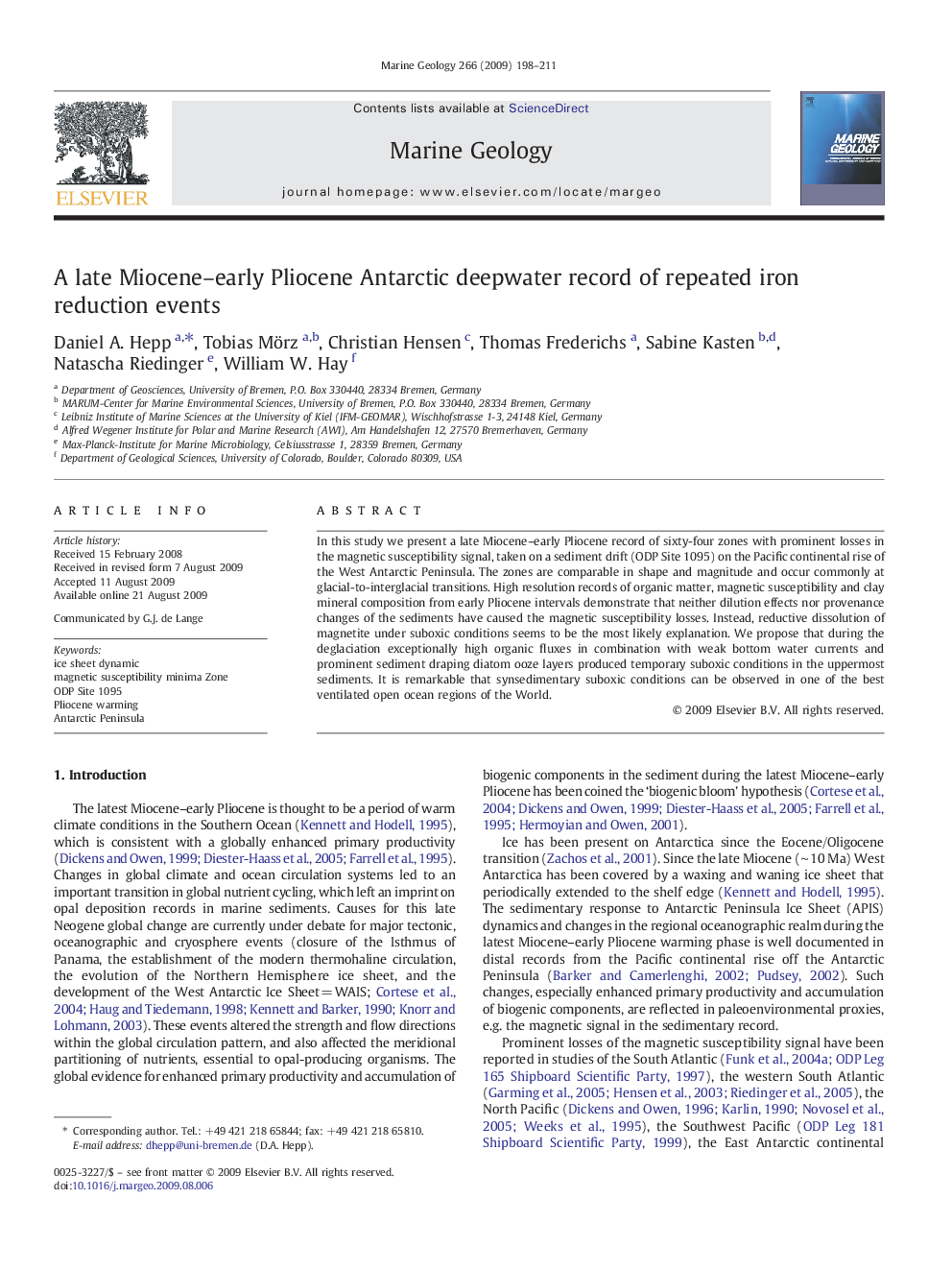| Article ID | Journal | Published Year | Pages | File Type |
|---|---|---|---|---|
| 4718974 | Marine Geology | 2009 | 14 Pages |
In this study we present a late Miocene–early Pliocene record of sixty-four zones with prominent losses in the magnetic susceptibility signal, taken on a sediment drift (ODP Site 1095) on the Pacific continental rise of the West Antarctic Peninsula. The zones are comparable in shape and magnitude and occur commonly at glacial-to-interglacial transitions. High resolution records of organic matter, magnetic susceptibility and clay mineral composition from early Pliocene intervals demonstrate that neither dilution effects nor provenance changes of the sediments have caused the magnetic susceptibility losses. Instead, reductive dissolution of magnetite under suboxic conditions seems to be the most likely explanation. We propose that during the deglaciation exceptionally high organic fluxes in combination with weak bottom water currents and prominent sediment draping diatom ooze layers produced temporary suboxic conditions in the uppermost sediments. It is remarkable that synsedimentary suboxic conditions can be observed in one of the best ventilated open ocean regions of the World.
